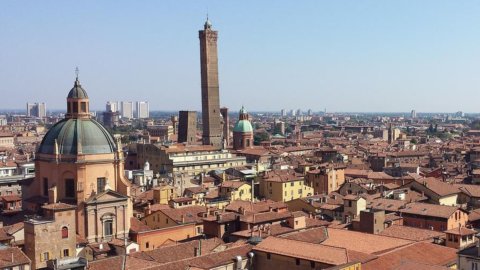Everything dies sooner or later, even museums and perhaps, when they aren't doing too well, the institutions lend them a hand. This is what happens to Bologna where institutional euthanasia is about to strike Museum of Petronian history, a young and fun route, almost a playground, a route divided into 34 thematic-chronological sections, which tell the story of the city and its people, from the Etruscan Felsina to the contemporary.
The museum, inaugurated in 2012, was the idea of Fabio Roversi Munich, former rector and former president of the Carisbo Foundation, who thanks to this initiative also gave new life to one of the most beautiful and ancient buildings in Bologna, Palazzo Pepoli Vecchio, in the central Via Castiglione.
Bologna, the headquarters of the Museum on loan to the Municipality
According to what the local newspapers write, the Foundation itself, today chaired by Patrizia Pasini, decided to liquidate Roversi's creation and to grant the museum headquarters on free loan to Common. The building, apparently, will have to be delivered empty as early as May, so eviction and move should be imminent. The mayor Matthew Lepore and its council want to stay in this immense house of over six thousand square meters Giorgio Morandi Museum and thus also resolve an age-old question about the legacy of the great painter.
Bologna, a solution for Giorgio Morandi's paintings
Morandi's paintings certainly deserve a worthy placement, even if their rarefied poetics seems a bit in contradiction with the sparkling beauty of Palazzo Pepoli, the subject of a visionary and ultra-modern internal renovation designed for a museum of the new millennium, signed by the architect Paolo Bellini, who placed a "Tower of Time" (homage to the city known as the "turrita") at the center of the construction, a structure in glass and steel flooded with natural light from above.
Yet Bologna looks with apathetic indifference at the end of the Museum that tells its story and Roversi Monaco probably has neither the strength nor the desire to defend his project. The entire museum itinerary of the Foundation conceived during his mandate and called Genus Bononiae, of which the City Museum was the center, will then go to the attic. The other four connected museums will remain, but the Carisbo Foundation is looking for private individuals willing to manage them and the call for expressions of interest expires on March 20th.
Museum of History, farewell: what will happen to the works?
The farewell is marked and in a few weeks the lights will go out on a corner of beauty, on one of the great ideas that have tried to liven up the cultural life of Bologna in the last ten years.
What will happen to the important pieces? We don't know. The archaeological finds, the paintings of Guercino, Carracci, of Giacomo Balla? The statue of Lucio Fontana, two enormous murals of Blue, one of which is as tall as an apartment building? And the life-size copy of a monumental perspective plan of the city, frescoed in the Bologna Room of the Vatican Apostolic Palace? For now there are no answers.
For the less important pieces the future could be worse: the large illustrative panels, with graphics by Italo Lupi, the films that accompany the visitors and for which they made themselves available Lucio Dalla, Massimo Valerio Manfredi, Philippe Davenport, Giorgio Albertazzi, Alessandro Bergonzoni, Francesco Guccini, Loriano Machiavelli e Umberto Eco? Much of this heritage will probably end up in a warehouse, the paintings will perhaps return to other rooms of the Foundation, the idea, the original identity of this place, will certainly die. Why? This simple question is not easy to answer. It probably costs too much for a Foundation that, after Covid, decided to reduce investments in culture, probably many interests meet in a city that is not very sensitive to this jewel set in its heart. It is not even clear how many visitors continue to frequent the museum and on the other hand advertising and attractive events are scarce, even the excellent and elegant bar that animated the hall closed its doors years ago.
This is how an era ends, this is how an idea dies, this is how times and people change and if someone wants to see the Museum of the History of Bologna for the first time or to say their final goodbyes, they had better hurry, time is running out. .





